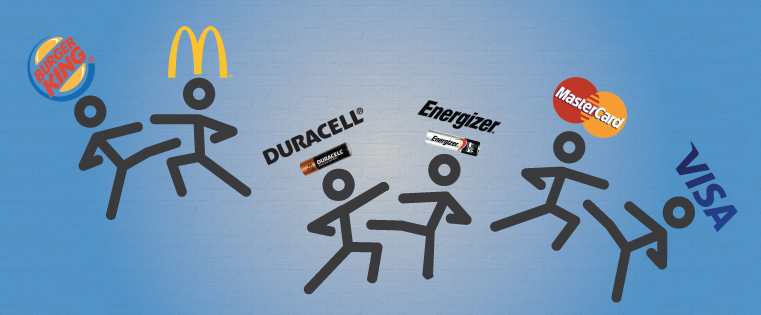On select Fridays, I reward myself for completing another week by ordering coffee from my neighborhood's local Starbucks. Today, as usual, I went to the website to peruse the menu for something new to try.

Unintentionally, I went down a rabbit hole exploring the website. I'm glad I did, though — When I was exploring, I noticed an "Education" link. Clicking this link led me to Starbucks's College Achievement Program.
This initiative is done in partnership with Arizona State University, and offers benefits-eligible Starbucks employees the opportunity to go to college, tuition-free. Eligible employees can choose from 80 undergraduate programs and work out a schedule that's functional for them.
Starbucks started the campaign to encourage college accessibility. Financial and educational commitments make it hard for students to finish their degree plans. To diminish some of the barriers that keep people from graduating, Starbucks initiated this plan in 2018 to bring awareness to the inequality of college affordability and use their position to help employees.
Upon learning about Starbucks' dedication to education — something also important to me — I was more motivated than ever to support the company. Because I knew my money was going towards college tuition, and happily ordered a larger coffee than I was planning on purchasing.
This scenario is one of many that can be the result of a successful cause-related marketing campaign, a tactic that makes a company's social responsibility the focus.
Here, let's dive into 10 incredible cause-related marketing campaigns — If you've recently come across an issue you want to support from a corporate angle, this post should give you the inspiration to get started.
What is cause-related marketing?
Cause-related marketing is a marketing method where businesses align themselves with social issues or beliefs that are important to them and execute a campaign accordingly. Companies use the tactic to bring awareness to a cause and show social responsibility.
It's likely you've come across cause-related marketing campaigns from your favorite brands. For instance, if you've ever completed a transaction with a donation to a foundation, you've participated in a cause-related campaign.
Oftentimes, companies will partner with a nonprofit organization for campaigns. When that happens, both parties can benefit from an increased reach from each other's audiences. Other times, companies choose or create a cause to support.
Cause-related marketing is highly beneficial for companies who want to improve perception of their brand. For example, as a consumer, brands that are visually socially responsible will always catch my eye. If I found out about a company from their cause-related post, I'd want to learn more about them and what they offer — and financially support the campaign.
Additionally, repeat customers who support the same causes will likely remain more loyal to a business that takes a stand for what they believe. When one of my favorite companies announced initiatives to improve sustainability, for example, I felt proud to support a brand that takes action.
Communities also benefit from cause-related marketing. Increased awareness opens doors for improvement. From the campaign and its support, social issues take massive steps forward.
If you're thinking of having your company take a stand, but are unsure of where to start, here are ten examples to inspire your choice.
Best Cause-Related Marketing Campaign Examples
Undoubtedly, not every company can send its employees to college — so we've included a range of examples and ways to inspire your audience to participate in your campaign in this post.
We'll look at how to get your community involved, product marketing inspiration, and, my favorite dessert — ice cream.
1. Ben & Jerry's: Democracy Is In Your Hands
In 2016, ice cream company Ben & Jerry's introduced a new flavor to promote democracy: Empower Mint. Along with the flavor came a campaign — "Democracy Is In Your Hands", which educated ice-cream lovers about barriers placed in low-income communities to prevent them from voting, like strict ID laws.
Empower Mint is a fudgy mint flavor that reflects the company's belief that "voting gives everyone a taste of empowerment". To emphasize everyone deserving an equal serving of democracy, the campaign included a video that outlined the injustices low-income communities face when casting ballots.
"Democracy Is In Your Hands" isn't just a one-off campaign, though. While the ice cream flavor was limited edition, the message isn't.So during election season, Ben & Jerry's ramps up the campaign. Currently, the campaign's web page has recent articles about voter suppression and information about how, and where, to vote.
Even though Ben & Jerry's is an ice cream company, the marketers use their company beliefs to form a basis for their campaigns. Democracy is heavily supported by the business, so they chose to highlight that with a product launch.
Takeaways: If it fits your company, tie in product launches with a cause. Maybe it's a line of pink socks for Breast Cancer Awareness Month or an app redesign for Pride Month. By integrating a product launch with a bigger cause, you're spreading awareness about an important cause while encouraging customers to buy your product and do something good for the world at the same time.
2. Bandcamp: Bandcamp Fridays
Bandcamp is a website where musicians can upload and sell their music directly to fans. Labels can also have a page where they host ecommerce options for their artists. Recently, it's come to light that artists get a small portion of streaming royalties from various platforms.
In 2020, Bandcamp decided to act. In support of independent music, the platform decided to start waiving their share of sales on select days. With this campaign, Bandcamp makes sure artists are getting paid more for their work.
Outside of Bandcamp Fridays, the website collects 15% from digital music sales and 10% from physical goods (merchandise can also be sold on the website). That 25% going back to artists shows that Bandcamp cares about who uses their platform.
On the first run of the campaign, music fans spent over $4 million. To put this into perspective, Bandcamp announced that this is about 15 times the amount usually made on Fridays.
It's hard for musicians to make money if they don't tour. This campaign highlights how Bandcamp aims to alleviate some of the stresses of being an independent musician, and strengthens the relationship between the platform and its users.
Takeaways: Maybe there's a cause that directly impacts customers. Some bands and artists can't afford to tour, so Bandcamp found a way to be supportive in spite of that. If there's a social cause you support that relates to your audiences' lives, think of how you can do your part to support them with a campaign.
3. Billie: Project Body Hair
Billie sells razors and other feminine care products. In 2019, "Project Body Hair" was introduced to celebrate body hair on women. The campaign wanted to start a conversation about female beauty standards by pointing out that women's razor brands don't show body hair — even though it exists.
The video for the campaign aimed to change the hairless tradition by adding a little fuzz. "Project Body Hair" was highlighted in this video, which was the first commercial for a razor brand that actually showedwomen's body hair. Normalizing the conversation can't happen without starting it, so Billie's marketers decided to implement the #projectbodyhair hashtag to keep it going.
On its website, Billie challenges its customers to help them grow the library of women on the internet with body hair using the hashtag (a great tactic to build brand awareness on social media platforms). In addition to the hashtag, the site cheekily mentions that yes, Billie sells razors, which remove body hair. They do so because of another belief: abolishing the pink tax.
A campaign about celebrating women and bringing awareness to unrealistic beauty standards shows Billie's audience that their mission goes beyond selling razors. Starting a transparent discussion about an important cause gives customers another reason to support the brand.
Takeaways: Start a hashtag for your campaign. If you use it often and your community engages with it, the hashtag could spread to qualified leads. This tells others that care about your cause what your brand is doing as a sign of support.
4. The Body Shop: Time To Care
In 2020, beauty and wellness company The Body Shop wanted to thank healthcare workers for their dedication. To do that, decision-makers at the company decided to start a campaign: "Time To Care". This initiative supports health, wellness, and kindness.
The Body Shop's North American teams partnered with shelters and assisted living communities to donate cleansing supplies, like body and hand soap. The company promotes practicing self-care, so they wanted to make that experience accessible to everyone.
Next came the #TimeToCare portion. Like Billie, The Body Shop has a supporting hashtag. The company takes part by posting valuable content about taking care of yourself in healthy ways. Giveaways for self-care bundles are also coordinated with the hashtag.

Hashtags spread the word of initiatives and promote a sense of inclusion between companies and customers. A global brand like The Body Shop can use its social media accounts and corresponding hashtag to keep their entire community informed about ways to help.
So far, The Body Shop has donated over 4 million dollars' worth of their products around the world. Care packages with shampoo, conditioner, and shower wash support healthcare workers, volunteers, and those that require assisted living. The brand is using their global presence and product offerings to make a difference.
Takeaways: In the Ben & Jerry's example, we saw how you can make your product connect with a cause if it typically wouldn't. Here, we see how a company's offerings can align with a cause. The Body Shop sells wellness products that are being donated to those in need.
Additionally, if your brand is global, starting a hashtag for your campaign is a good way to keep track of progress around the world."Time To Care" is a global initiative, and it's easier to track audience segments if they all use the same hashtag.
5. Beauty Bakerie: Juneteenth Festival
On June 9th, 2020, a makeup company announced that they won't be celebrating July 4th, but instead, Juneteenth. Also known as Freedom Day, "Juneteenth" is short for the day slavery was abolished in America: June 19th, 1865.
Beauty Bakerie, a Black-owned business, states in the Instagram post, "It's important we all do what we can do within our scope and our reach to dismantle systems put in place that ignore the value of any life."
View this post on InstagramA post shared by Beauty Bakerie (@beautybakeriemakeup) on
Civil rights is important to the brand, and to bring awareness, Beauty Bakerie hosted its first Juneteenth Festival. The festival included a site-wide sale, prizes, digital guest speaker panels, flash sales and giveaways, and educational resources.
The weekend-long festival, which took place on the company's website, promoted liberation, peace, and freedom. But it also aimed to educate customers about why the company decided to celebrate the holiday.
Takeaways: Use seasonality and event-hosting to your advantage. Beauty Bakerie's team took advantage of a holiday, which aligned with cultural significance, and hosted an event in celebration. This tactic boosted sales and their customers' knowledge of an important day for the company.
Consider hosting an event or use a holiday to promote your cause-marketing campaign (Like my favorite ice cream duo did for April 20th).
6. Mythical Kitchen: Leftovers Challenge
YouTube chef, Josh Scherer, hosts the Mythical Kitchen channel, where he shares comfort food recipes. Recently, he teamed up with multiple food channel hosts, including Andrew Rea of Binging with Babish, and Alvin Cailan of First We Feast, to introduce the #LeftoversChallenge.
This campaign supported the Restaurant Workers Community Foundation, an organization that wants to make the restaurant industry a hospitable environment for its workers. The charity aligns with Mythical Kitchen's channel niche and the purpose of the fundraiser: to make food accessible.
#LeftoversChallenge asks audiences to make creative meals out of their leftovers and share them on social media using the hashtag. In addition, the creators set up donation links on their videos and asked subscribers to donate.
The organizers donated 50% of the money directly to restaurant workers to support them if they were unemployed. Additionally, 25% went to nonprofits serving restaurant workers, and the last 25% went towards zero-interest loans for struggling establishments.
In the end, the campaign raised over $35,000 in support of restaurants that can't afford to deliver, needed to lay-off staff, or couldn't find the means to operate. By collaborating with multiple other channels, Scherer pulled off a massive cause-related marketing campaign that raised awareness for food accessibility.
Takeaways: Align yourself with other companies for a cause-related marketing strategy. The benefits include an expanded reach and potential leads — plus, you'll all be working towards solving an issue that's important to all parties involved.
7. Monterey Bay Aquarium: Act For the Ocean
In 2020, California's Monterey Bay Aquarium had to close their doors for a couple of months. Even without an audience, the animals still need daily care from the staff, but the effect on income from lack of ticket sales made operations tough.
To provide an alternate way to experience aquatic life, and to bring animal care to the forefront, the aquarium's marketing team ramped up YouTube strategy and began posting a diverse array of videos. From Animal Crossing Let's Plays for kids, staff-led aquatic live streams, and Morning MeditOCEAN, the team makes the aquatic world accessible for multiple interests and age groups.
A couple of series, like "Fast Ocean Facts," promote the aquarium's campaign, "Act for the ocean." This campaign strives to educate the public about climate change, aquatic life affected, and ways to help.
Videos like the one above leverage the aquarium's educated staff to answer questions about aquatic life. Expanding YouTube strategy to include a cause campaign is a brilliant way to diversify social media content and delight customers in lieu of in-person visits.
Takeaways: If you have a permanent cause-related marketing campaign running, use it to expand your current social strategy. If you're struggling with content ideas, planning content that educates your audience about your cause is a great way to show brand support. Plus, getting staff involved in social media content like this supports an online company culture.
8. Essence and Pine-Sol: Build Your Legacy
Essence is a magazine that celebrates African American women. To promote Black female entrepreneurship, the magazine partnered with Pine-Sol to launch the "Build Your Legacy" contest.
For the contest, participants send in a video explaining their business and how they're creating their own legacy. Essence's community then votes for who they think should win based on the entries posted on the campaign's landing page.
The contest aims to highlight black female entrepreneurs who are making positive change in their communities. Prizes include one Grand Prize winner, who will receive $100,000, and two semi-finalists, who will each walk away with $15,000.
Those three winners will also get to connect with a business consultant to discuss successful decision-making, in addition to the money they receive for their businesses.
Because Essence and Pine-Sol are both brands started by Black entrepreneurs, this contest connects to the companies as much as the target audience. Legacies for both businesses highlight the empowerment of African American entrepreneurs, so this campaign-driven contest is their way of giving back to their community.
Takeaways: If your brand regularly runs contests, align one with a cause-related campaign. Essence and Pine-Sol's cause was empowering the Black female business owner — how can you empower your target audience? Encourage audience participation by allowing them to vote on the entries, so you can build customer relationships while promoting the campaign.
9. Squarespace: Act With Pride
For Pride Month, website software host, Squarespace, decided to spotlight LGBTQIA+ community members with inspiring stories. The "#ActWithPride" campaign offers up downloadable free Instagram Story Templates for audiences to use when designing submissions. Winners will then be featured on Squarespace's Instagram main page and Story.
View this post on InstagramA post shared by Squarespace (@squarespace) on
This campaign gets everyone involved. Squarespace calls upon their entire social media audience to get creative and share inspiring stories about experiences that define them. For instance, one winning submission from drag performer Crystal Methyd says, "When I’m struggling to come up with new concepts I like to watch videos to see how other artists approach their art and to challenge myself to think of my drag from a different perspective. I’m never afraid to embrace the absurd."
Squarespace aims to lift up the voices of others with this month-long campaign. Though they didn't create the cause, the company chose a company-centric approach to participating and including their audience along in the celebration. User-generated content makes this campaign successful, and is a great content method to use for engagement.
Takeaways: Initiate user-generated content with your campaign. If you know your audience aligns with your cause, ask for their submissions. You can populate your social media pages with the voices of your community, encouraging customer engagement. Leads who see themselves represented on social media might be compelled to move farther along in the sales process.
10. ALT_: Project Stamp
Pronounced ALT Space, ALT_ is a nonprofit dedicated to rewriting harmful narratives about Chicago's neighborhoods through action, art, and culture. It partners with organizations like Habitat for Humanity and Chicago Park District to build spaces in Chicago's Austin community that promote artistry and education.
In 2019, ALT_ began the Project Stamp campaign, which is dedicated to highlighting the importance of Austin's residents. It's a free picture day, where anyone can get their portrait taken for free. The idea is to rewrite the narrative of Austin being a dangerous community by illustrating and spotlighting the actual atmosphere with culture.
Says one of ALT_'s founders, "The portraits will be a humanizing counterbalance to the other types of images common across the area … While those types of messages are important, they risk drowning out the nuances to life on the West Side."
Pictures taken will be given to the participants and showcased in spaces all over the neighborhood. The nonprofit's founders hope to put the pictures in visible spaces that are aimed at revitalizing the community.
Takeaways: Nonprofits are formed to solve important issues, and ALT_ is no exception. The Project Stamp campaign is powered by local participation.If you are thinking about hosting an event to support your cause, take steps to get your local audience involved so you can build local awareness and a community within your proximity.
How can your company support a cause that aligns with its values? Do you plan to host a virtual festival, like Beauty Bakerie, or start a fundraising challenge like Mythical Kitchen? Whichever method you choose, make sure you're keeping your customers and the cause a central part of your campaign for the maximum benefit of all parties involved.
![Download Now: Free Marketing Plan Template [Get Your Copy]](https://no-cache.hubspot.com/cta/default/53/aacfe6c7-71e6-4f49-979f-76099062afa0.png)











![How Brands Can Build a Loyal Audience [Infographic]](http://53.fs1.hubspotusercontent-na1.net/hub/53/file-2451913158-jpeg/loyal-audience.jpeg)